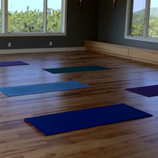
Today the world is fighting against invisible enemies and taking actions to save the entire globe. As we all know COVID-19 cases are increasing day by day and the best thing we can contribute to our society is social distancing. But for many people, especially for fitness freaks staying home during lockdown can be difficult. The best thing to stay fit in quarantine is to practise Yoga. Starting a house yoga practice can save time, energy, and cash. 15-20 minutes of yoga in your house can be more valuable than just PS4, Netflix and Instagram.
While most yoga teachers will advise you to learn the fundamentals of asana (yoga poses) at a live class before putting on the mat in the home,” Nothing simplifies the home practice,” says Brian Cooper, a 25-year old Yoga teacher in Miami. Moving to classes has a lot of added benefits, of course,” he adds, “but I have observed time and time again it is when people begin to practise in the home that the real insights happen.”
While practicing yoga at home seems simple enough theoretically, even experienced professionals can be uncertain about which poses to choose and how to place them together. Assessing the subtle and tasteful art of Yoga takes years of research, but you will find out some basic building blocks which will permit you to begin putting together practices of your own and to approach your home practice with confidence.
Beyond the motives to begin a yoga practice at home, today you will find new strategies to start one. You can learn some ways that blur the lines between showing up in a live yoga course and rolling out a mat in your living room to do yoga in your home. Here are a few ideas as to “how to practise yoga during lockdown” which can help you to stay healthy at home.
1. How to Begin With Yoga at Home
The best reason to start a home yoga practice is that you don’t need much to begin:
Pick or create a quiet, uncluttered space in your home, and stock it with all the basic yoga props such as mat, strap, blocks, blanket, etc. Space doesn’t have to be big, but it needs to be quiet, open, and clean. Get realistic goals, beginning with small pockets of the period (10-15 minutes).
Begin using basic beginner’s yoga sequences and extend your practice as your skills improve. Nevertheless, it is your yoga practice, thus construct it to best meet your individual needs.
2. Try Virtual Yoga Classes
Apart from the numerous yoga DVDs and books available on the market, online yoga classes and virtual classes can bring more benefits. While an instructor isn’t physically there to watch your orientation and adjust your present hands-on, multimedia is the next best thing…and for a few, it may be better.
3. Which Yoga Poses Should You Do At the Beginning?
Opening Poses
The opening presents of a sequence wake up the major muscle groups and provide a transition from the busyness of the day to a more environmentally focused practice.
This pose contains some physical movement that gradually warms the body, a breath-awareness part, and also a contemplative element that helps you direct your attention to what’s happening inside your heart and mind.
Sun Salutations or Surya Namaskar
Surya Namaskar, or Sun Salutations, pickup where launching poses leave off, including breath and movement, creating heat, and invigorating the full body. Their thorough movements quiet your mind and prepare your system for the postures. Begin with a Sun Salutation that comprises both High Lunge and Anjaneyasana (Low Lunge). If you want a more vigorous, you might start with Surya Namaskar A and B, in which you leap through the alterations rather than stepping.
Standing Poses
These poses create strength, stamina, and flexibility throughout the entire body. They work the major muscle groups, such as the quadriceps, gluteals, hamstrings, and heart. Standing poses often precede backbends, twists, and forward bends at a sequence since they are so effective at preparing your body for these poses.
4. How to Practise Consistently?
Now the best advice I can provide you is “make your yoga part of your morning ritual.” This means getting to bed 15 minutes earlier so your yoga practice doesn’t cut into your sleep period. The next bit of advice is to sit down with your weekly calendar and start to cross out any action which isn’t functioning you anymore (this takes being honest).




